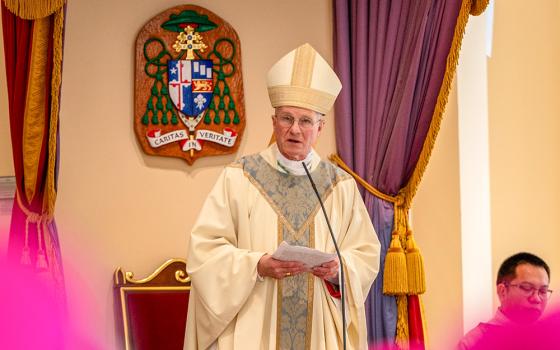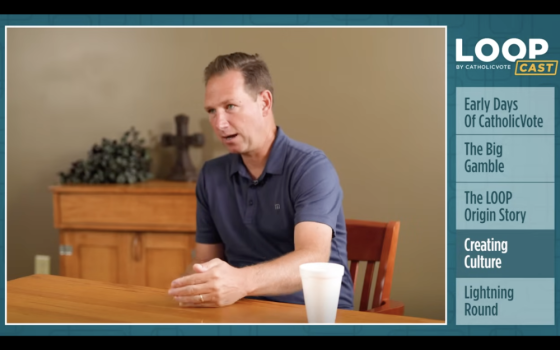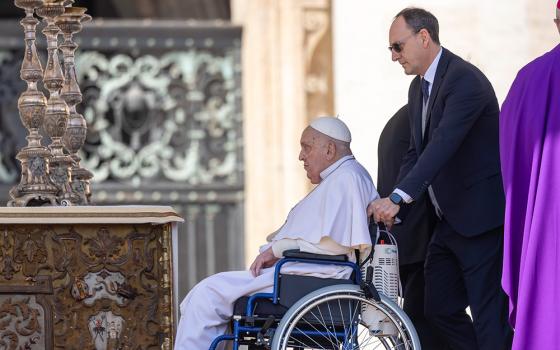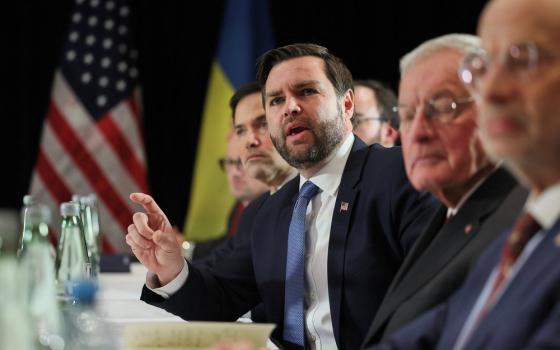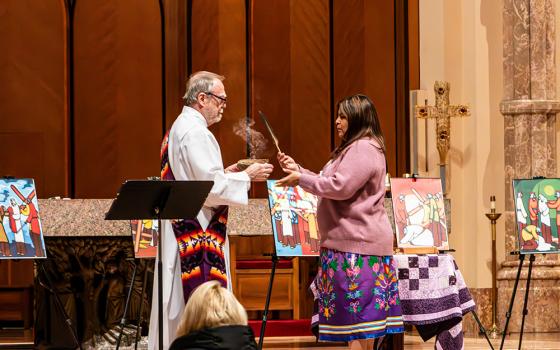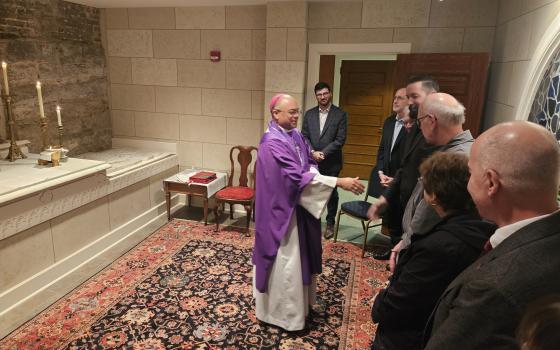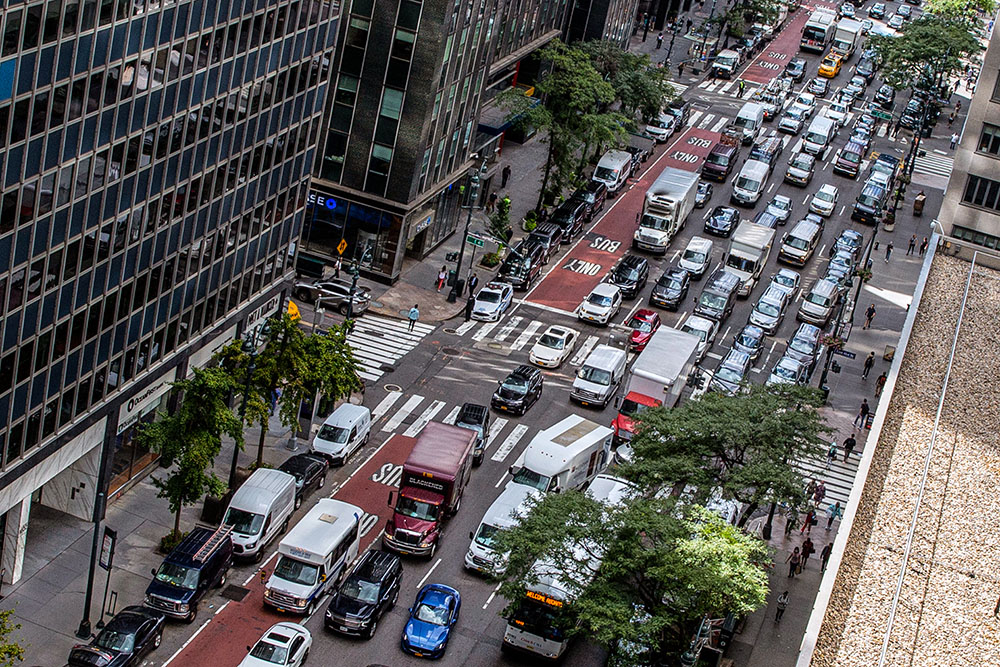
Heavy traffic fills Third Avenue in New York's Manhattan borough near the United Nations, Sept. 20, 2021. (AP/Ted Shaffrey)
New York's congestion pricing plan — which advocates say is a model to address choking traffic, air pollution and climate change — is gridlocked like vehicles on the Brooklyn Bridge at rush hour.
Electronic sentinels, intended to collect $15 tolls from cars entering midtown, now stand silent. Seen as a way of increasing funding for mass transit, the plan was supposed to start July 1, 2024, with $555 million approved to install equipment for congestion pricing. But New York Gov. Kathy Hochul put the brakes on the project, which has roots from the 1960s in urban planners' efforts to deal with the city's traffic chokehold.
Election-year politics played a role in its apparent demise.
Hochul, according to New York media accounts, has been pressured by Democrats, including Minority Leader Hakeem Jeffries, a Brooklynite, to hold off on the congestion pricing plan to assuage suburban voters in swing districts on Long Island and upstate, regions more dependent on private auto usage.
Democrats are concerned that opposition to congestion pricing could cost the party the House of Representatives. In the midterm elections of 2022, where Democrats nationwide surpassed expectations, they lost seats in the New York suburbs.
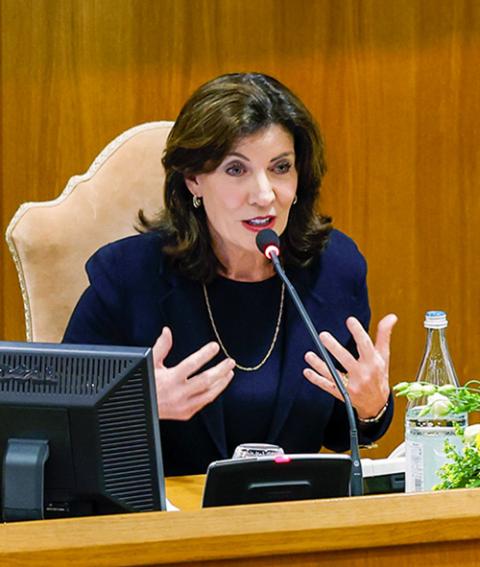
New York Gov. Kathy Hochul speaks during a summit, titled “From Climate Crisis to Climate Resilience,” at the Vatican May 16. (CNS/Lola Gomez)
By putting a pause on the plan, the Catholic governor put herself at odds with views expressed by Pope Francis in Laudato Si', the landmark encyclical on the environment, according to Jamie Kralovec, professor of urban planning at Georgetown University.
"Urban planning plays a social and moral vision in the city," said Kralovec, who writes and teaches about the Catholic moral vision for urban life.
He finds support in the writings of Francis, a pope who appreciates the urban dynamic of Catholic faith through his experience of his native Buenos Aires, Argentina. One photo widely circulated when Francis became pope showed then-Cardinal Jorge Bergoglio coming through a subway turnstile in Buenos Aires, indicating a kinship with New York strap-hangers.
In Laudato Si', Francis wrote: "The quality of life in cities has much to do with systems of transport, which are often a source of much suffering for those who use them. Many cars, used by one or more people, circulate in cities, causing traffic congestion, raising the level of pollution, and consuming enormous quantities of non-renewable energy."
Francis rarely opines on local issues, but his writings would indicate a support for concepts such as congestion pricing, Kralovec said.
In the now-stifled New York plan, money raised from the tolls was slated for subway capital projects, including expanding some lines and building elevators for disabled riders. It would also extend an existing subway line to East Harlem and would cut traffic by creating an incentive to avoid tolls, forcing drivers into mass transit, advocates say.
They also see it as a way to curtail exhaust from cars and trucks, improving air quality and slowing climate change. They argue that the American love of the private automobile needs to be curtailed to avoid environmental disaster.
Gov. Kathy Hochul 'has gutted the future of the Metropolitan Transportation Authority,' says Manhattan Catholic Thomas Caffrey. 'Our subway system is the life of New York. She doesn't get it.'
Among those advocates is Thomas Caffrey, a Manhattanite and member of the Laudato Si' study group at the Church of St. Paul the Apostle on the West Side. The parish church stands near 60th Street, the demarcation where electronic tolls would be collected on traffic heading to midtown.
Caffrey argued that Hochul's decision is a craven case of buckling to political pressure, generated largely by suburbanites and outer borough New Yorkers who insist on driving into the city.
"We who live in the city, who walk and take public transportation, are outraged," he said. Reflecting the upstate/downstate tensions that rile New York politics, Caffrey said that Hochul, a native of the Buffalo region, doesn't fully grasp the life of the city dweller who relies on public transit.
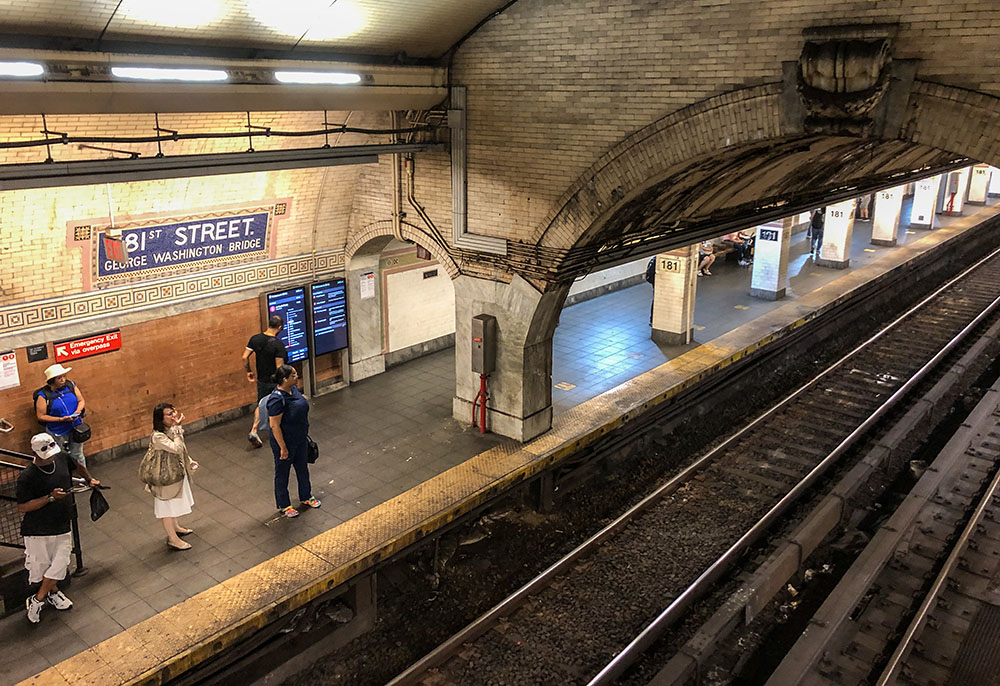
Passengers wait on the platform at a subway station in Manhattan, New York, June 17. (Wikimedia Commons/Famartin)
"She has gutted the future of the Metropolitan Transportation Authority (MTA). Our subway system is the life of New York. She doesn't get it," said Caffrey. According to the MTA, 90% of Manhattan commuters use mass transit.
Still, not all Catholic voices in New York are supportive of congestion pricing. Their opposition has little to do with the pope. Some see the plan as pushed by Manhattan elites, concerned about preserving quiet space in their neighborhoods while imposing a tax on driving commuters.
Opponents include Gov. Phil Murphy of New Jersey, another Democratic Catholic governor, who sued to stop the plan. New Jersey argued that it would impose costs on commuters while creating traffic bottlenecks west of the Hudson River, as drivers park their vehicles to avoid the Manhattan tolls.
The newspaper for the Brooklyn Diocese, The Tablet, argued against the plan in an editorial, citing its costs and impact on outer borough New Yorkers who live in transit deserts.
'There is little talk about New York City residents who have limited commuting options,' says an editorial in the Brooklyn Catholic newspaper The Tablet.
"There could not be a worse time to restrict business traffic in a city still suffering from the damaging economic effects of the COVID pandemic," said the editorial, noting its possible impact on restaurants and theaters.
"Manhattan has always been about traffic. Whether it is car or foot traffic. That is what makes the city hum," the editorial argued, noting that "there is little talk about New York City residents who have limited commuting options."
The editorial did not mention any of Francis' writings on the urban environment.
Paul Moses, a Brooklynite who writes frequently on city politics and development, worries that congestion pricing plays once again to New York's real estate industry, which donates in large sums to political campaigns.
"They get to build bigger and bigger buildings. It's woven into the politics of the city," he said.
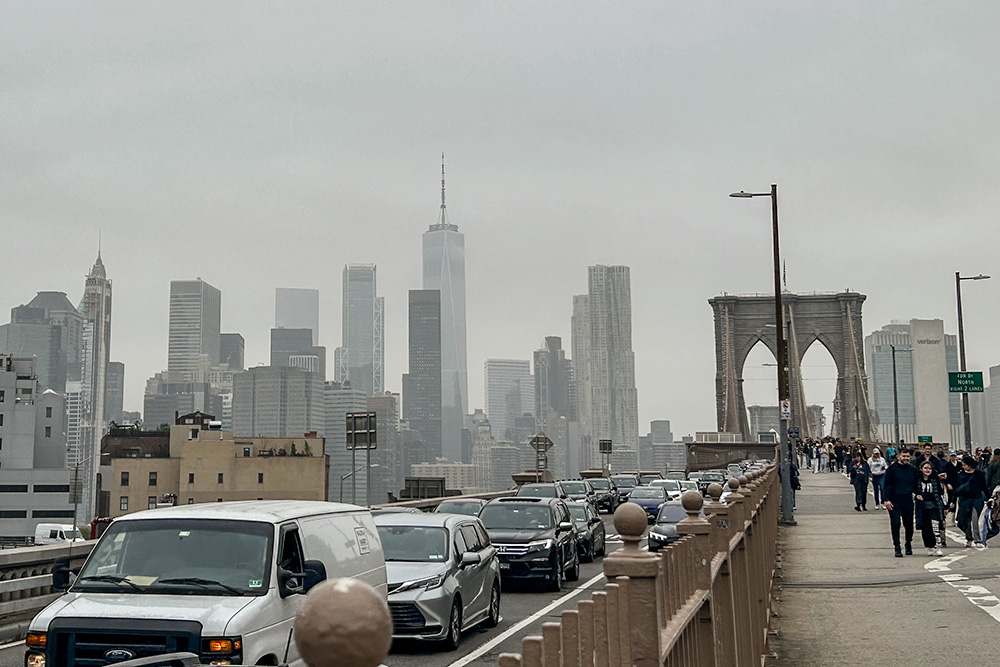
With Manhattan's Financial District in the background, vehicular and pedestrian traffic is seen on the Brooklyn Bridge in New York City on May 6. (Wikimedia Commons/MemeGod27)
The cause of increased congestion in Manhattan, he said, is developers building more tall buildings. The current congestion pricing plan has other flaws as well, he said, citing that much of the money raised would go not to subways but to commuter rail lines that are otherwise heavily subsidized.
Congestion pricing is not popular in the wider region. Two-thirds of residents in the state, according to a Siena College poll, oppose the plan.
But Kralovec noted that all congestion pricing plans are unpopular at first, then gradually gain support once people see their benefits, as they have in London and Singapore.
"City dwellers who might have been skeptical changed their minds," he said. A congestion pricing plan implemented in London back in 2003 has grown in popularity over time, according to public opinion surveys.
The fate of congestion pricing in New York is being watched around the world. Advocates say it will be resurrected, once this year's elections are over, perhaps with a lower toll structure, currently a topic of the state legislature in Albany. If it doesn't make it in New York, it is unlikely to make it in any other American city. New York is the least dependent on private autos of any city in the country.
Advertisement
"New York is always a bellwether. It has a ripple effect," said Kralovec, who is familiar with the city from his student days at New York University and who gives the city high marks for initiatives in recent years that increased pedestrian street access, in particular closing off traffic around Times Square.
Politics by nature takes the short-term view, but Catholic moral teaching, said Kralovec, looks at the wider vision. How cities plan for issues such as air pollution and sprawl — fostered by car use, which spreads out development — will hinge on the intersection of politics and urban planning.
"There is a need to reduce the centrality of the car in our lives," he said, noting that long-term solutions will involve tradeoffs among developers, drivers and transit riders.
Caffrey said that the arguments over congestion pricing will continue to raise significant moral concerns for Catholics. For example, he noted lack of subway access for disabled people remains a concern for those who believe in the Catholic social justice concept of the common good. Funds raised by congestion pricing are slated for projects to install elevators at subway stations that now don't have them.
"Do you go for the person in the wheelchair or that person in the SUV? Pope Francis would probably go for the first one," he said.

